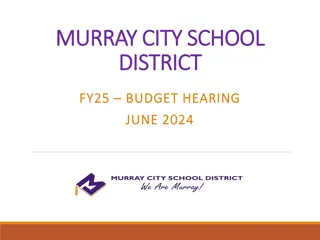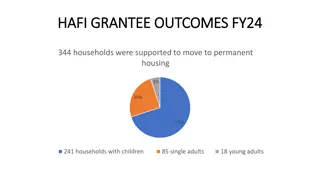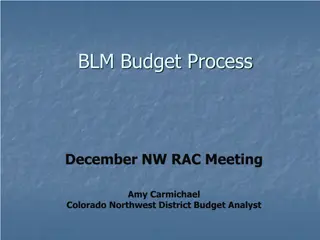School Budget Development Process for FY24 - Overview and Guidelines
Explore the FY24 budget development process for school GO teams, detailing steps from data review to final budget approval. Learn about the roles of principals and GO team members, strategic planning, budget allocation meetings, and more to align resources with key priorities for student success.
Download Presentation

Please find below an Image/Link to download the presentation.
The content on the website is provided AS IS for your information and personal use only. It may not be sold, licensed, or shared on other websites without obtaining consent from the author.If you encounter any issues during the download, it is possible that the publisher has removed the file from their server.
You are allowed to download the files provided on this website for personal or commercial use, subject to the condition that they are used lawfully. All files are the property of their respective owners.
The content on the website is provided AS IS for your information and personal use only. It may not be sold, licensed, or shared on other websites without obtaining consent from the author.
E N D
Presentation Transcript
PAUL L. DUNBAR ELEMENTARY PAUL L. DUNBAR ELEMENTARY
NORMS NORMS 2 This is a meeting of the GO Team. Only members of the team may participate in the discussion. Any members of the public present are here to quietly observe. We will follow the agenda as noticed to the public and stay on task. We invite and welcome contributions of every member and listen to each other. We will respect all ideas and assume good intentions.
GO TEAM BUDGET DEVELOPMENT PROCESS GO TEAM BUDGET DEVELOPMENT PROCESS YOUR SCHOOL STRATEGIC PLAN is your roadmap and your role. It is your direction, your priorities, your vision, your present, your future. Step 1: Data Review Step 2: Strategic Plan Review Step 3: Budget Parameters (Strategic Priorities) Step 4: Budget Choices 3
Overview of FY 24 GO Team Budget Process Step 7 GO Team Final Budget Approval Meeting Step 6 Principals: HR Staffing Conferences Begin Step 5 GO Team Feedback Session: Draft Budget Presented & Discussed February multiple meetings, if necessary Step 4 Principals: Associate Supt. Discussions and Review Step 3 GO Team Initial Budget Session: Allocation January 24 early February Budgets Approved by March 17 Step 2 Principals: Workshop FY 24 Budget Late February Early March Step 1 Review and Update Strategic Plan and Rank Strategic Priorities February (supports needed, specific challenges, coaching) January 24 By end of Fall Semester GO Teams are encouraged to have ongoing conversations
Budget Allocation Meeting What The first GO Team meeting is when the principal will provide an overview of the budget allocation for GO Team members and the general public. Why This meeting provides an opportunity for the principal and GO Team to ensure alignment on the school s key strategic priorities, gain a deeper understanding of the budget allocation, and provide input to drive the direction of the draft budget. When End of January- Early February
FY24 BUDGET DEVELOPMENT PROCESS FY24 BUDGET DEVELOPMENT PROCESS Principal s Role Design the budget and propose operational changes that can raise student achievement Flesh out strategies, implement and manage them at the school level Focus on the day-to-day operations Serve as the expert on the school Hire quality instructional and support personnel The GO Team s Role Focus on the big picture (positions and resources, not people) Ensure that the budget is aligned to the school s mission and vision and that resources are allocated to support key strategic priorities 6
Paul L. Dunbar ES Strategic Plan Paul L. Dunbar ES Strategic Plan 7
Paul L. Dunbar ES Strategic Plan Priority Ranking Higher 1. Lower
FY24 Budget Parameters 9 FY24 School Priorities 1. Weekly Data Review PLCS Rationale Data-driven and data-based instruction is critical to informing appropriate learning for students. 2. International Baccalaureate school- wide implementation IB is the school Signature Program that informs the philosophy of learning and learning methods of all content areas including ELA, Math, Science, and SS. Dunbar is working towards 50% or more of students demonstrating proficiency in ELA and Math on GMAS and NWEA/MAP. 3. Focus on Literacy and Math instructional best practices.
FY24 Budget Parameters 10 FY24 School Priorities 4. ELA and Math Intervention Blocks Rationale Dedicated time for students to receive specific interventions and/or enrichment for personalized learning in ELA and Math. 5. After school/Saturday tutorial Ensure that students are receiving maximized opportunities for achievement and remediation after regular school hours.
11 Discussion of Budget Discussion of Budget Summary Summary (Step 4: Budget Choices) (Step 4: Budget Choices)
EXECUTIVE SUMMARY EXECUTIVE SUMMARY 12 This budget represents an investment plan for our school s students, employees and the community as a whole. The budget recommendations are tied directly to the school s strategic vision and direction. The proposed budget for the general operations of the school are reflected at $4,967,683 This investment plan for FY24 accommodates a student population that is projected to be 261 students, which is a decrease of 15 students from FY23.
School FY24 CARES Allocation School FY24 CARES Allocation 15 In addition to a General Fund allocation, our school has been allocated CARES funding that must be used to support implementation of the school-based intervention block and other school-based needs as a result of the COVID-19 Pandemic. Once the support needed to implement our school-based intervention block/course has been fulfilled, we can use the remaining CARES funds to address other school-based needs that are a result of the COVID-19 Pandemic.
CARES ALLOCATIONS CARES ALLOCATIONS OTHER ALLOWABLE CARES EXPENDITURES INCLUDE: OTHER ALLOWABLE CARES EXPENDITURES INCLUDE: 16 Mental and Physical Health: Cover the costs of additional counseling, telehealth, therapeutic services, and wraparound services and supports (contracted hours, professional learning, programs) Supplemental Learning: Cover costs of remediation, and/or enrichment opportunities during the school year for students (afterschool programs, additional pay for teachers and staff, transportation). Technology Support: Software, assistive technology, online learning platforms, subscriptions. At-risk Student Populations: Cover costs of school specific activities, services, supports, programs, and/or targeted interventions directly addressing the needs of low-income students, SWD, racial & ethnic minorities,ELL, migrant & homeless students, and students in foster care. Professional Development: Cover costs of additional professional development for school leaders, teachers, and staff (trainings, extended professional development days, consultants, programs). Continuity of Core Staff and Services.Restore any potential LEA FY22 budget reductions due to decreased state and/or local revenue.
Whats Next? January GO Team Budget Allocation Meeting (Jan. 24th-early February) February One-on-one Associate Superintendent discussions Cluster Planning Session (positions sharing, cluster alignment, etc.) Program Manager discussions and approvals GO Team Feedback Meeting(s) beforeprincipal s staffing conference HR Staffing Conferences (Late February) March Final GO Team Approval Meeting (AFTER your school s Staffing Conference and BEFORE Friday, March 17th) 17
18 QUESTIONS? QUESTIONS? Thank you for your time and attention.























